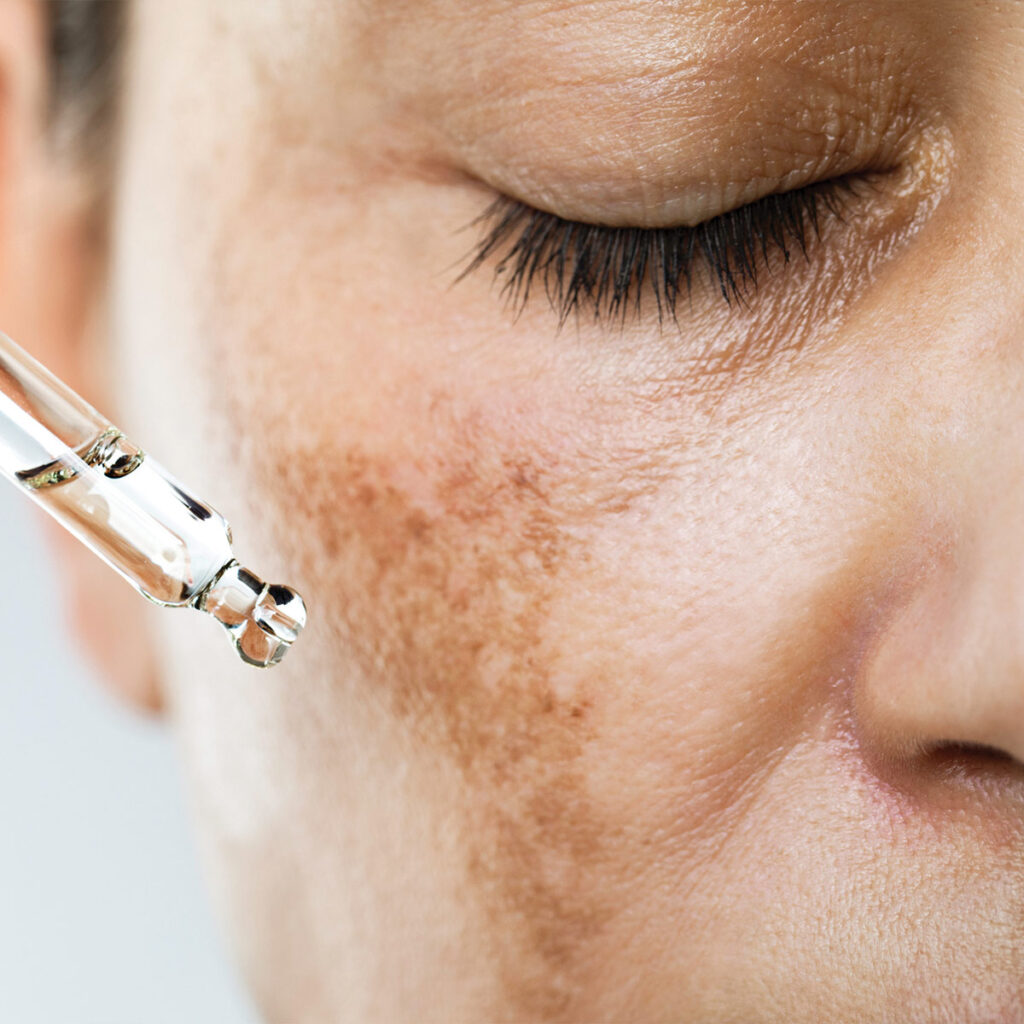Annual Aging Well Section
Pigmentation caused by sun exposure is a common cosmetic concern for aging adults.
What is Photoaging?
Photoaging, or sun damage, occurs as the skin is exposed to UV rays over time. Sun exposure is responsible for 90% of visible changes to the skin, which include pigmentation changes as the skin tries to protect itself by producing extra melanin. This can cause the appearance of dark age spots – also known as liver spots and sunspots. These small, flat areas of increased pigmentation typically appear on areas exposed to the sun such as the face, hands, shoulders, and arms. Like the name suggests, age spots become more prevalent with age and are very common in adults over 50. While these types of spots don’t need medical attention, they can become a cosmetic concern.
Treatment Options
Thankfully, many treatment options are available to combat pigmentation caused by photoaging.

- Skincare products with ingredients such as kojic acid, arbutin, and hydroquinone can effectively lighten age spots. Vitamin C is an antioxidant that helps brighten age spots and can be administered to the skin via a serum.
- Topical medications such as retinol and tretinoin can gradually fade age spots over several months.
- Laser therapy destroys the melanin-producing cells without damaging the skin’s surface.
- Cryotherapy involves briefly applying liquid nitrogen to the spot to destroy extra pigment.
- Microdermabrasion and microneedling prompt skin to regenerate, which lightens age spots.
- Chemical peels are a chemical solution applied to the skin to remove its top layers. New, smoother skin will form to take its place.
Outlook
If you’re looking to address the cosmetic effects of photoaging, consult with your dermatologist to determine which treatment option is best for you. To prevent future sun damage, make sure to wear broad-spectrum sunscreen and wear protective clothing such as long sleeves and hats to prevent UV exposure.

